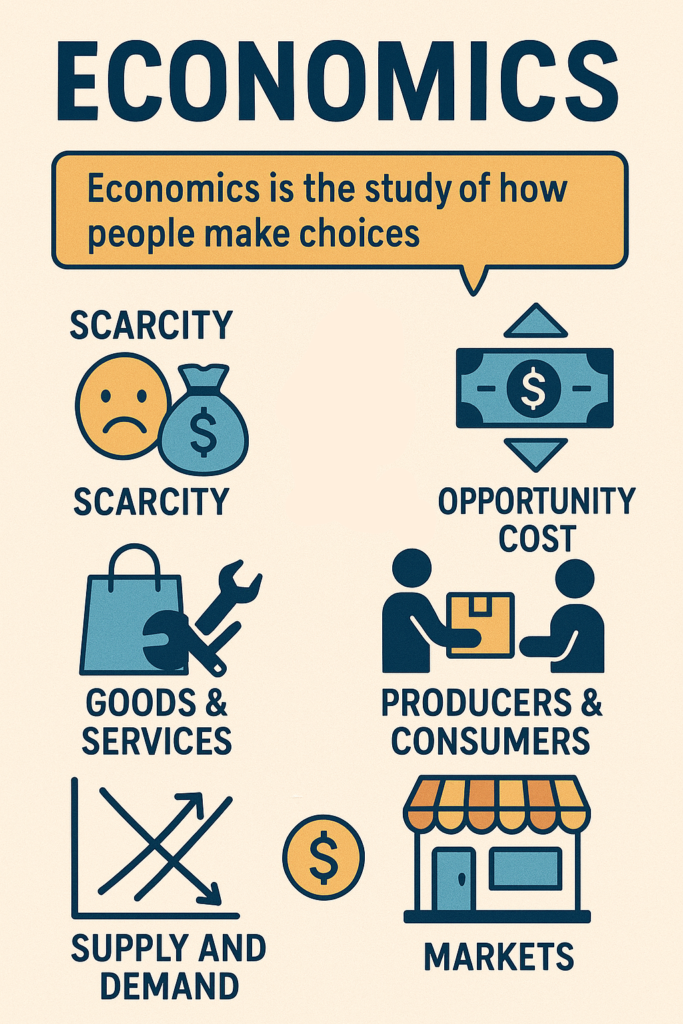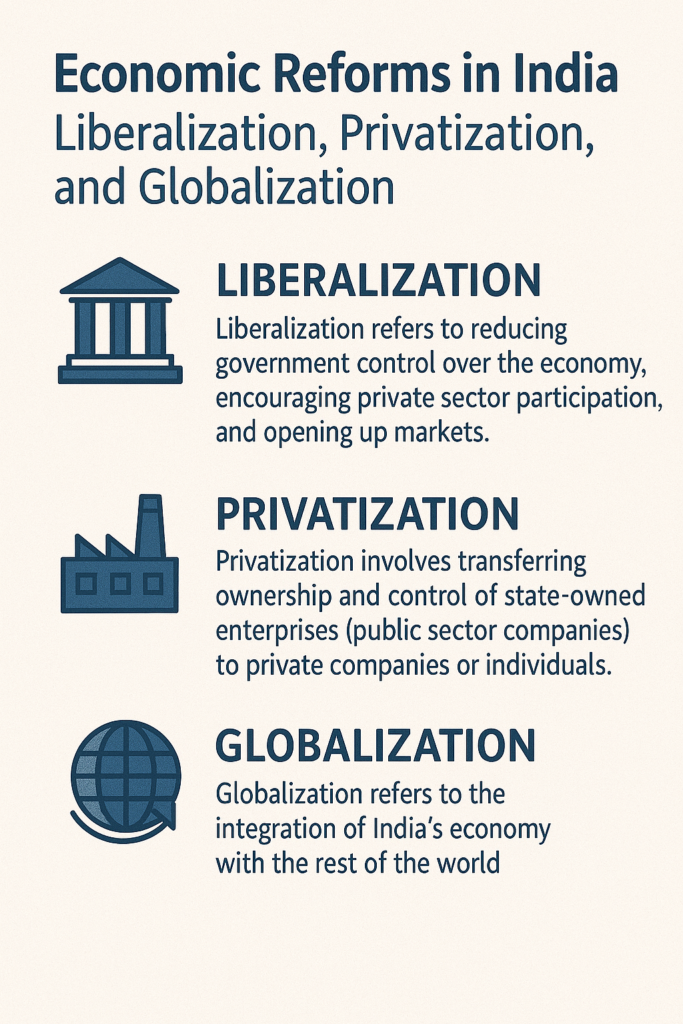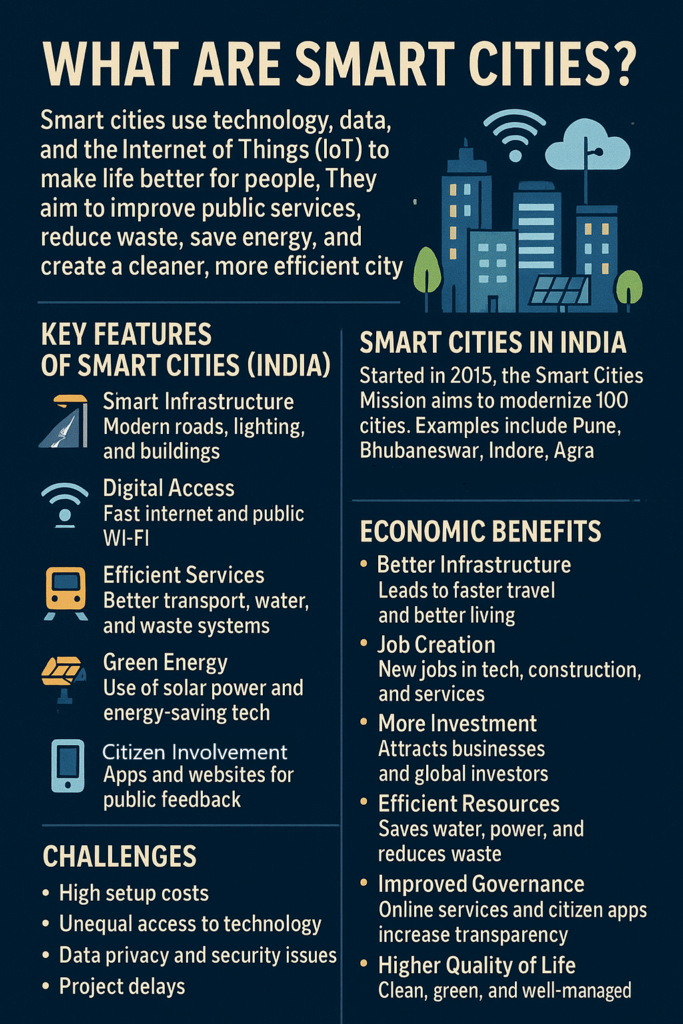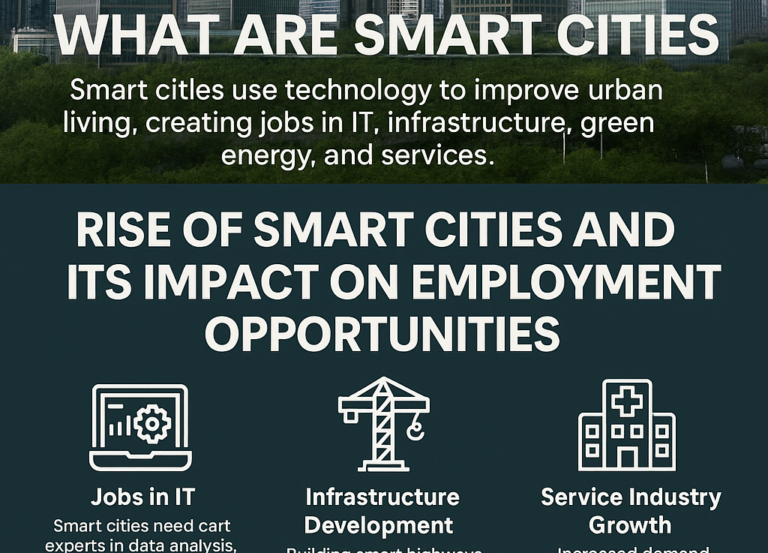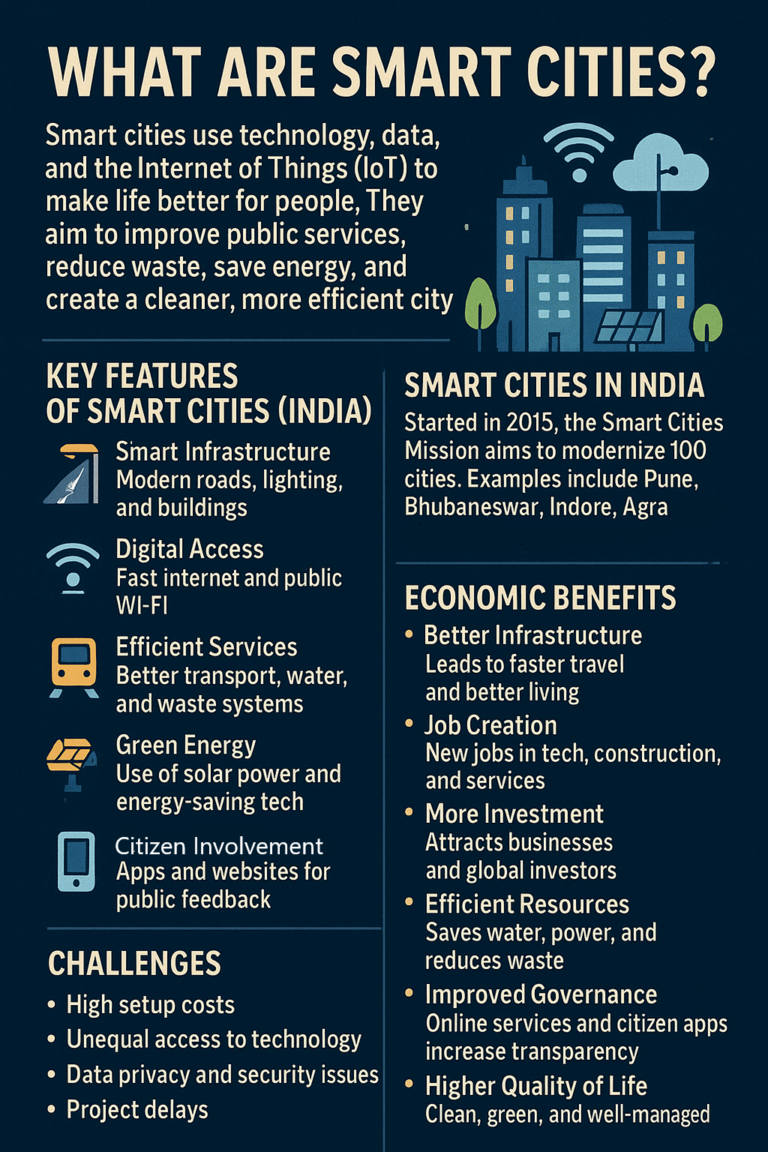1. Supply and Demand
These are two of the most important concepts in economics and describe how markets work.
Demand
- What is Demand?
Demand refers to how much of a product or service people want to buy at different prices. The general rule is: when prices are low, people want to buy more of something. When prices are high, they want to buy less. This is called the Law of Demand. - Example: If the price of a pizza is ₹500, you might buy one. But if the price drops to ₹300, you might decide to buy two or more because it’s cheaper.

Supply
- What is Supply?
Supply refers to how much of a product or service is available for sale at different prices. The general rule is: when prices are high, sellers want to produce and sell more because they can make more money. When prices are low, they will produce and sell less. - Example: If the price of a pizza is ₹800, pizzerias might make and sell more pizzas because they can earn more money. But if the price falls to ₹300, they might make fewer pizzas because they don’t earn enough profit.
The Balance of Supply and Demand
- Equilibrium: The point where the amount people want to buy (demand) is equal to the amount producers are willing to sell (supply) is called market equilibrium. This is usually where the price is set for most products.
- Example: If a pizza shop is selling 100 pizzas a day at ₹600, but they only sell 50, they may lower the price to ₹400 to increase sales. At the same time, they might not make as many pizzas if the price is too low. The balance between how many pizzas people want and how many the shop can sell is the equilibrium point.
2. Inflation
- What is Inflation? Inflation is the rise in the overall price level of goods and services in an economy over time. When inflation happens, the value of money decreases, meaning you need more money (rupees) to buy the same things as before.
- Example: If you could buy a chocolate bar for ₹20 last year and now the price is ₹25, that’s inflation. The chocolate bar costs more, and your ₹20 doesn’t go as far.
- Why Does Inflation Happen?
- Demand-pull Inflation: When people want to buy more than what is available (too much demand), prices go up.
- Cost-push Inflation: When the cost of making things increases (like higher wages or raw materials), companies raise prices to cover the cost.
- Effects of Inflation:
- Higher Prices: Goods and services become more expensive, which can reduce people’s ability to buy things.
- Erosion of Savings: The value of money decreases, so savings lose value over time. For example, if you saved ₹10,000 last year, you may only be able to buy fewer goods and services with the same amount this year due to inflation.
3. Gross Domestic Product (GDP)
- What is GDP? GDP stands for Gross Domestic Product, and it is the total value of all goods and services produced within a country in a given time period (usually a year). It’s used to measure the economic health of a country.
- Example: If India makes cars, clothes, and food worth ₹150 lakh crore in one year, India’s GDP is ₹150 lakh crore.
- Why is GDP Important?
- Measuring Economic Growth: If a country’s GDP is increasing, it generally means the economy is growing. If GDP is shrinking, the economy might be in trouble.
- Comparing Economies: GDP helps compare the economic performance of different countries. For example, the U.S. has a very high GDP, meaning it produces a lot of goods and services.
- Types of GDP:
- Nominal GDP: This is the GDP measured at current prices, without adjusting for inflation.
- Real GDP: This is the GDP adjusted for inflation, so it gives a more accurate picture of how much the country is actually producing.
4. Putting it All Together
These concepts—supply, demand, inflation, and GDP—work together to shape how an economy functions.
- When there is high demand for products and low supply, prices increase, causing inflation. If this inflation continues, the value of money falls, and people’s purchasing power decreases.
- On the other hand, if demand is low and supply is high, prices may decrease, which could lead to deflation (the opposite of inflation).
- If a country’s GDP is growing, it might indicate a healthy economy with more jobs and higher income, while if GDP shrinks, it can be a sign of an economic slowdown.
Key Terms to Remember:
- Demand: How much people want to buy at a certain price.
- Supply: How much producers are willing to sell at a certain price.
- Inflation: The rise in prices over time, reducing the value of money.
- GDP: The total value of goods and services produced in a country, used to measure economic performance.
By understanding these basics, you can better understand how economies work and how events like inflation, changes in supply and demand, or changes in GDP affect people’s daily lives.

